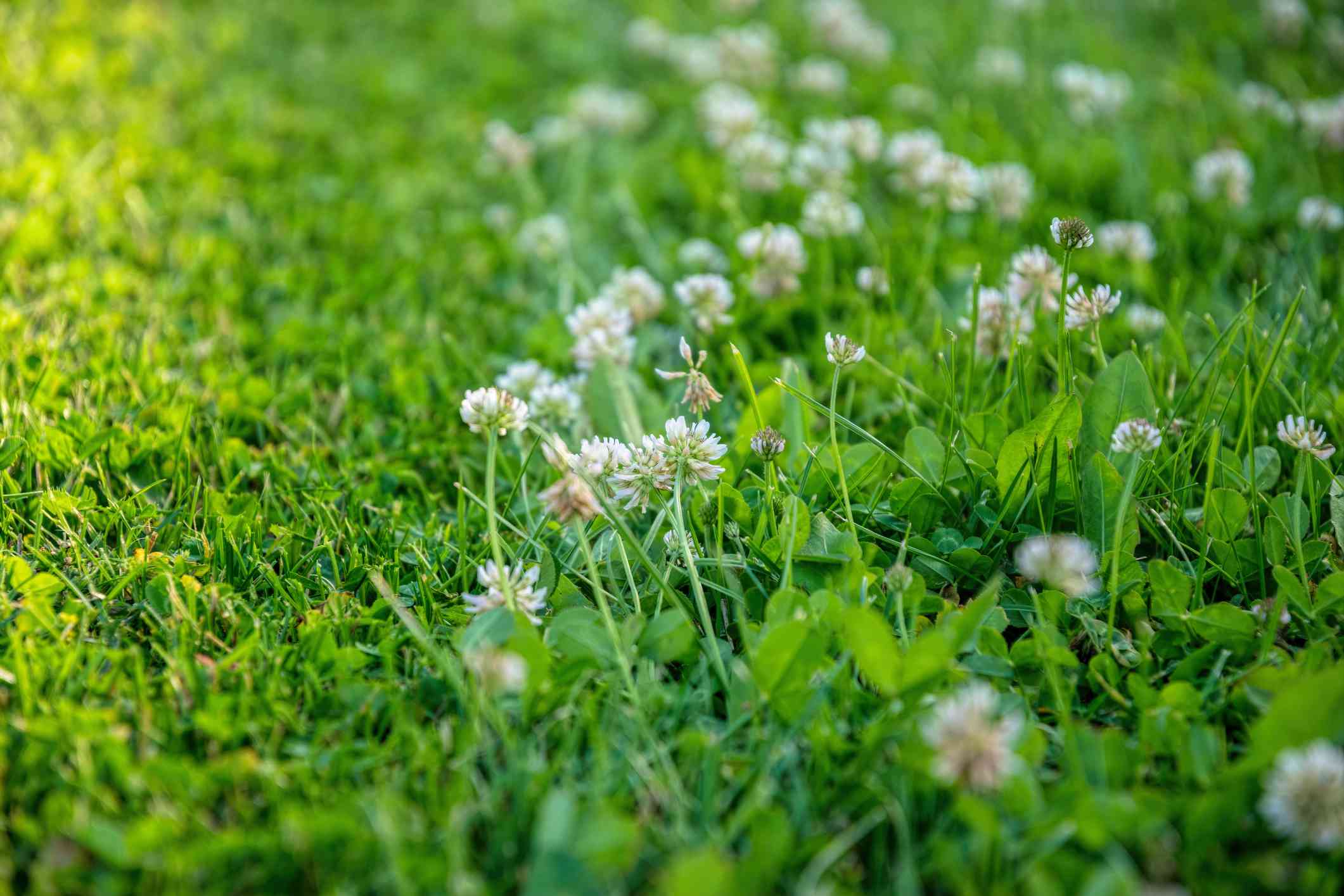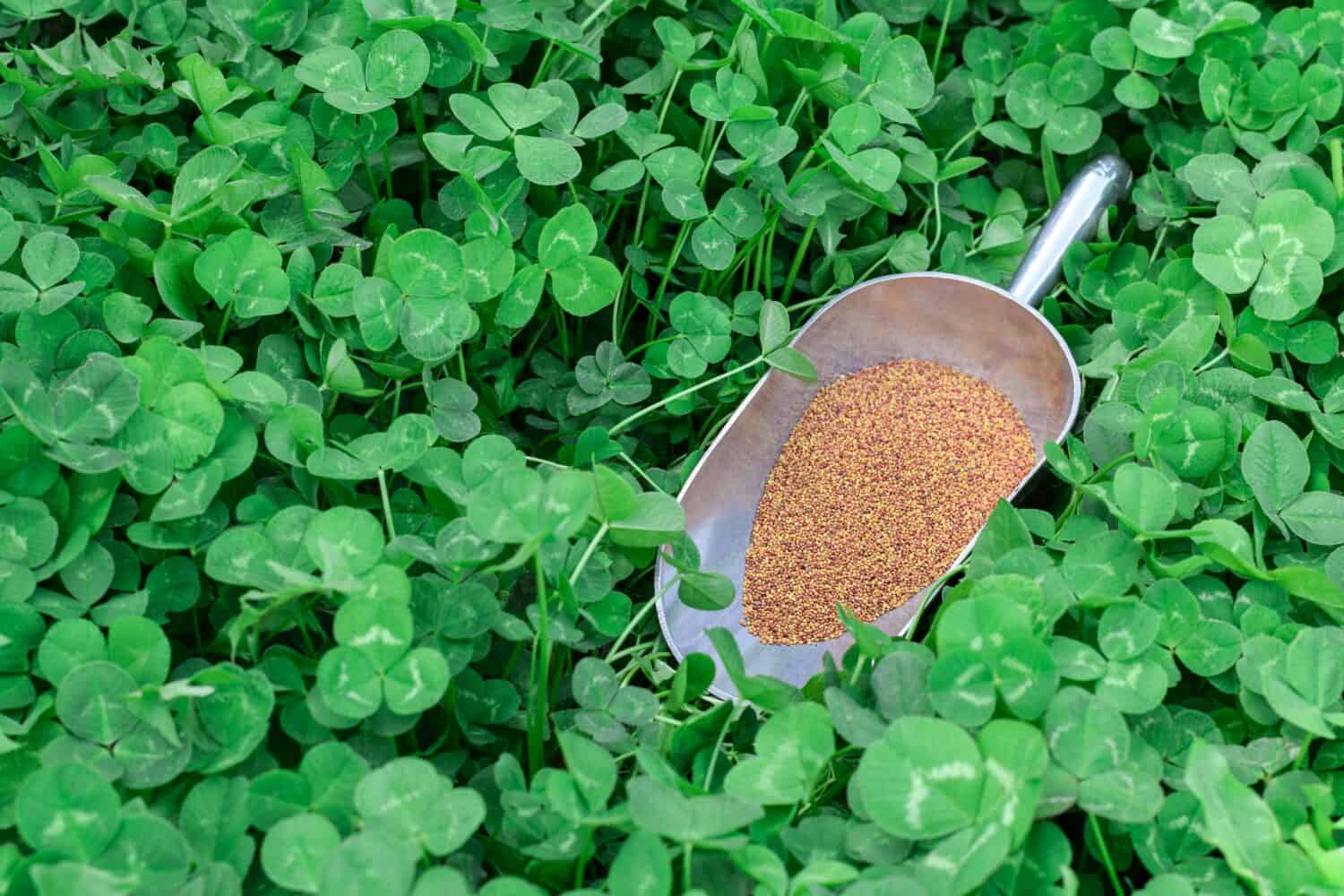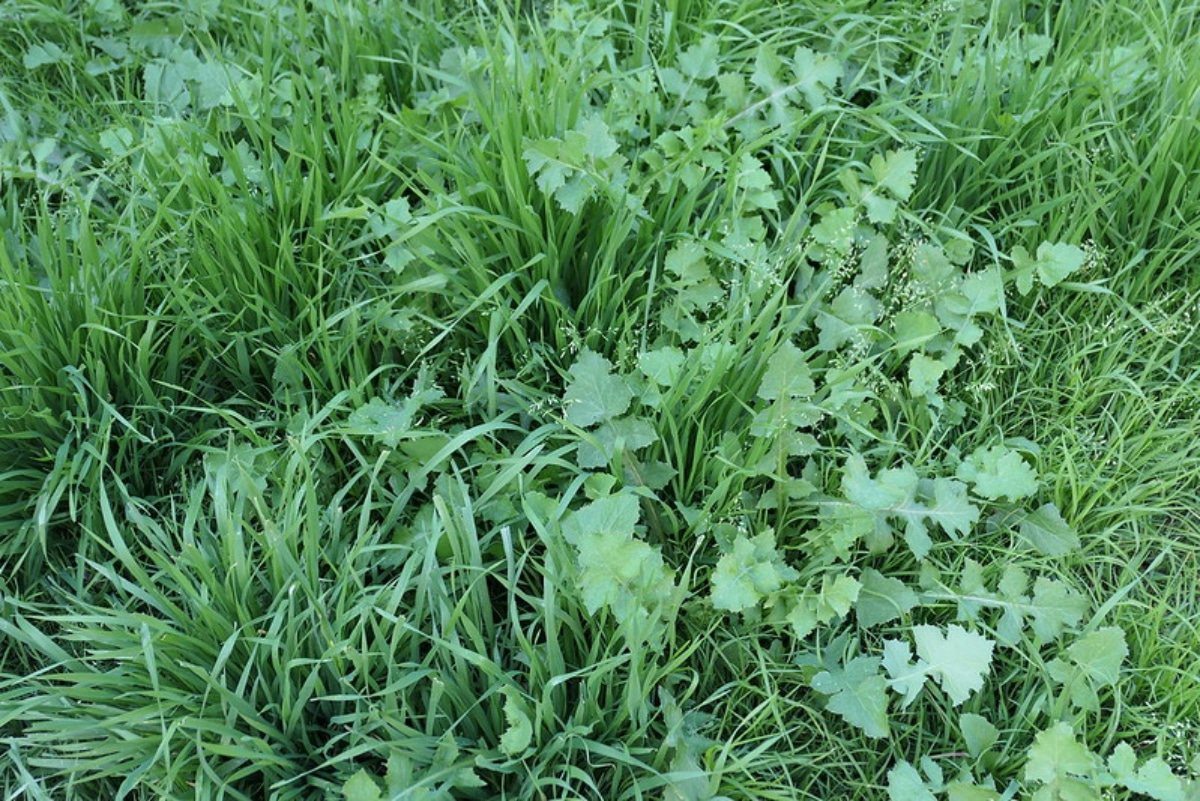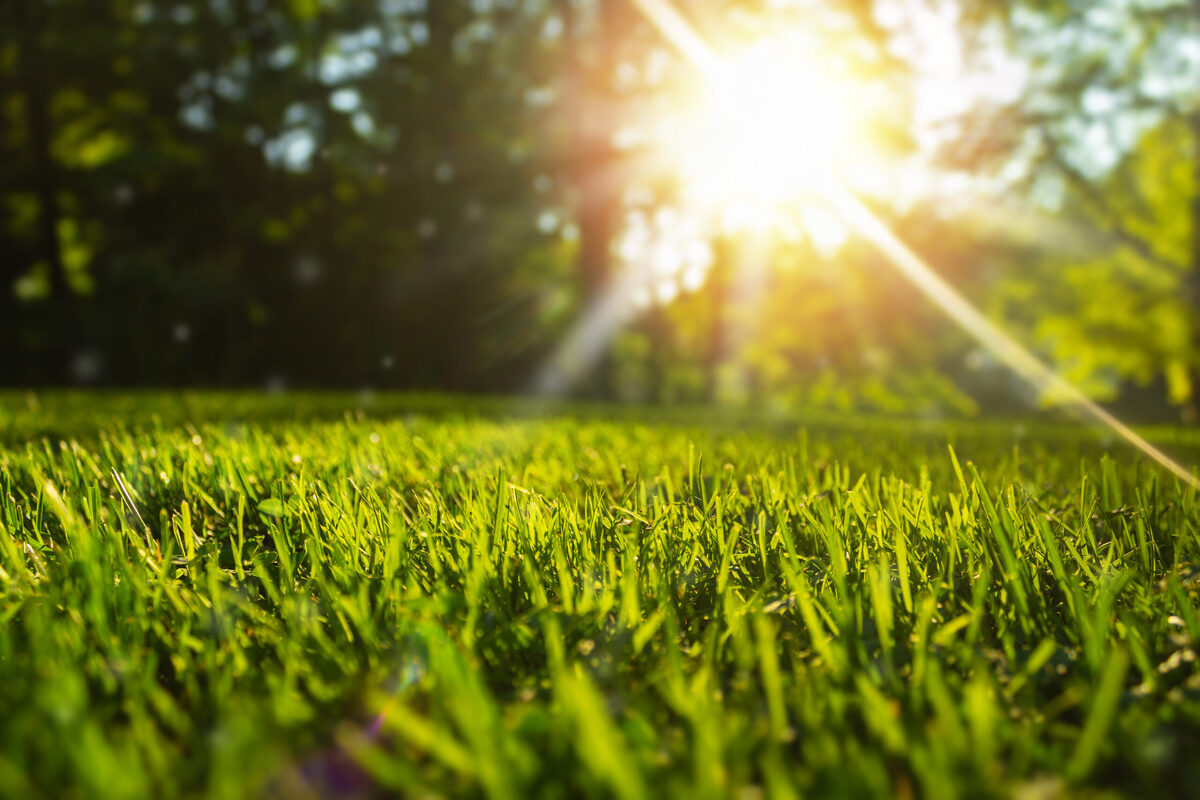Home>Gardening & Outdoor>Landscaping Ideas>How To Switch From Grass To Clover


Landscaping Ideas
How To Switch From Grass To Clover
Published: February 2, 2024
Discover effective landscaping ideas for switching from grass to clover in your yard. Enhance your lawn with eco-friendly clover alternatives.
(Many of the links in this article redirect to a specific reviewed product. Your purchase of these products through affiliate links helps to generate commission for Storables.com, at no extra cost. Learn more)
Introduction
So, you're considering making a bold move and swapping out your traditional grass lawn for something a little more unique and eco-friendly – clover. This decision may seem unconventional at first, but the benefits and charm of a clover lawn are truly remarkable.
In this comprehensive guide, we'll explore the exciting world of clover lawns and learn how to make the switch seamlessly. From the numerous advantages of clover to the essential steps for planting and maintaining it, you'll gain valuable insights that will empower you to transform your outdoor space into a lush, sustainable oasis.
Buckle up and get ready to embark on a journey that will not only elevate the aesthetics of your lawn but also contribute to a greener, more diverse environment. Let's dive in and discover the wonders of clover lawns together.
Key Takeaways:
- Embrace the benefits of clover lawns, from low maintenance and environmental advantages to attracting pollinators and providing year-round greenery, for a visually stunning and sustainable outdoor space.
- Choose the right clover variety and diligently prepare your lawn before planting clover to ensure successful establishment and growth, creating a vibrant and resilient clover lawn.
Read more: How To Kill Clovers In Grass
Benefits of Switching to Clover
Transitioning from a traditional grass lawn to a clover lawn offers a plethora of benefits that extend far beyond mere aesthetics. Here are some compelling reasons why making the switch to clover is a fantastic idea:
- Low Maintenance: Clover requires minimal upkeep compared to traditional grass. It thrives in a variety of soil conditions and is highly drought-tolerant, reducing the need for frequent watering.
- Environmental Benefits: Clover is a nitrogen-fixing plant, meaning it naturally enriches the soil with this essential nutrient. This reduces the need for chemical fertilizers, promoting a healthier ecosystem.
- Attracts Pollinators: The vibrant blooms of clover attract bees and other pollinators, contributing to biodiversity and supporting local ecosystems.
- Drought Resistance: Clover’s deep root system enables it to withstand dry spells more effectively than traditional grass, making it an excellent choice for regions prone to drought.
- Weed Suppression: Due to its dense growth habit, clover can outcompete many common weeds, reducing the need for herbicides.
- Year-Round Greenery: Unlike traditional grasses that can turn brown during periods of heat or drought, clover maintains its lush green appearance throughout the year, providing a consistent splash of color.
- Soft Texture: Walking barefoot on a clover lawn is a delightful experience, thanks to its soft, cushiony texture.
By embracing a clover lawn, you’re not only creating a visually stunning and low-maintenance landscape but also contributing to a more sustainable and ecologically balanced environment.
Choosing the Right Clover Variety
When it comes to selecting the ideal clover variety for your lawn, several factors come into play. Each clover species possesses unique characteristics that cater to different environments and preferences. Here are some popular clover varieties to consider:
- White Clover (Trifolium repens): This widely used clover variety is known for its low-growing habit and ability to thrive in diverse soil types. It forms dense mats of foliage and produces small, white flowers that attract pollinators.
- Red Clover (Trifolium pratense): With its striking pinkish-red blossoms, red clover adds a vibrant pop of color to the lawn. It is a valuable forage crop and can tolerate a range of soil conditions.
- Dutch Clover (Trifolium repens var. pannonicum): Also referred to as Ladino clover, this variety features larger leaves and flowers compared to white clover. It is well-suited for lawns and can withstand heavy foot traffic.
- Crimson Clover (Trifolium incarnatum): This annual clover variety displays stunning crimson flowers and is often used as a cover crop to enrich the soil. It thrives in cool, moist conditions.
Before making a selection, consider your local climate, soil type, and the intended use of the lawn. For instance, if you desire a clover lawn that can withstand heavy foot traffic, Dutch clover may be the optimal choice. Conversely, crimson clover might be suitable for enriching the soil in areas that require rejuvenation.
It’s also beneficial to consult with local gardening experts or nurseries to determine which clover variety aligns best with your specific lawn care needs. By choosing the right clover variety, you can lay the foundation for a thriving and visually captivating lawn that suits your unique preferences and environmental conditions.
Preparing Your Lawn for Clover
Before introducing clover to your lawn, it’s essential to prepare the existing turf to ensure a smooth transition and optimal growth conditions for the clover. Here are the key steps to prepare your lawn for the introduction of clover:
- Assess the Current Lawn: Evaluate the health and density of the existing grass. If the grass is sparse or unhealthy, consider overseeding it with a grass variety that complements clover, such as fine fescue or perennial ryegrass.
- Soil Testing: Conduct a soil test to determine the pH level and nutrient content of the soil. Clover thrives in slightly acidic to neutral soil with good fertility, so amendments may be necessary based on the test results.
- Weed Control: Address any existing weed issues before planting clover. Consider using natural weed control methods to minimize the presence of competing vegetation.
- Mowing and Dethatching: Trim the existing grass to a short height and dethatch the lawn to improve soil contact for the clover seeds. This process also allows for better seed-to-soil contact, promoting successful germination.
- Aeration: If the soil is compacted, consider aerating the lawn to enhance water and nutrient penetration, creating an optimal environment for both the existing grass and the incoming clover.
- Adjusting Soil pH: If the soil test indicates a need for pH adjustment, incorporate lime to raise the pH or elemental sulfur to lower it, based on the specific requirements of clover.
By diligently preparing your lawn for the introduction of clover, you can create a supportive environment that encourages the successful establishment and growth of this beneficial and visually appealing ground cover. These preparatory measures lay the groundwork for a flourishing clover lawn that harmoniously coexists with the existing vegetation.
Consider overseeding your grass with clover seeds in the fall for a gradual transition. Mow the grass short, remove thatch, and spread clover seeds evenly. Water regularly and avoid using herbicides that could harm the clover.
Planting Clover
Now that your lawn is primed and ready, it’s time to embark on the exciting process of planting clover. Whether you opt for seeding or sodding, the following steps will guide you through the seamless integration of clover into your outdoor space:
- Seed Selection: Choose a high-quality clover seed blend that aligns with your lawn’s specific requirements, considering factors such as sun exposure, soil type, and intended use.
- Seed Distribution: Broadcast the clover seeds evenly across the prepared lawn using a spreader or by hand. Aim for thorough yet not overly dense coverage to facilitate robust growth and establishment.
- Seed-to-Soil Contact: After distributing the seeds, gently rake the soil to ensure optimal seed-to-soil contact, which is crucial for successful germination.
- Watering: Provide consistent moisture to the seeded area, ensuring that the soil remains consistently damp but not waterlogged. This encourages germination and initial root development.
- Sodding (Optional): If you opt for sodding, lay the clover sod carefully, ensuring that the edges are tightly joined to prevent desiccation and promote seamless integration with the existing turf.
- Germination and Establishment: Monitor the seeded or sodded area closely for signs of germination and early growth. Depending on the variety, clover typically establishes within a few weeks under favorable conditions.
Throughout the planting process, it’s crucial to maintain a delicate balance of moisture, sunlight, and care to facilitate the successful integration and growth of clover. By following these steps, you can lay the groundwork for a vibrant and resilient clover lawn that enhances the beauty and functionality of your outdoor space.
Read more: How To Grow Clover Instead Of Grass
Caring for Clover
Once your clover lawn has taken root, providing proper care is essential to ensure its continued health and vitality. By implementing the following maintenance practices, you can nurture a thriving clover lawn that remains lush and resilient throughout the seasons:
- Watering: While clover is relatively drought-tolerant, consistent moisture is beneficial, especially during dry spells. Water the lawn as needed to maintain adequate soil moisture, aiming for deep, infrequent watering sessions to encourage robust root development.
- Mowing: Keep the clover at a moderate height, typically around 2 to 4 inches, to promote dense growth and discourage weed encroachment. Mowing also encourages branching, resulting in a lusher, more visually appealing lawn.
- Fertilization: Clover’s nitrogen-fixing abilities reduce the need for supplemental fertilization. However, if the soil lacks fertility, consider applying a balanced, slow-release fertilizer to support the clover’s growth and overall vigor.
- Weed Control: Due to its dense growth habit, clover naturally suppresses many common weeds. However, occasional hand-weeding or spot treatment with organic herbicides can help manage any persistent weed growth.
- Overseeding: Periodically overseed the clover lawn to maintain its density and address any thinning areas. This practice helps rejuvenate the lawn and ensures consistent coverage.
- Monitoring: Regularly inspect the clover lawn for signs of pests, diseases, or nutrient deficiencies. Promptly address any issues to maintain the lawn’s overall health and vitality.
By incorporating these essential care practices into your lawn maintenance routine, you can foster a robust and visually stunning clover lawn that elevates the appeal of your outdoor space while requiring minimal upkeep.
Maintaining a Clover Lawn
As your clover lawn matures, ongoing maintenance plays a crucial role in preserving its beauty and resilience. With thoughtful attention and strategic interventions, you can ensure that your clover lawn remains a thriving focal point of your outdoor landscape. Here are key strategies for maintaining a flourishing clover lawn:
- Regular Inspection: Conduct routine inspections of your clover lawn to assess its overall health and identify any emerging issues. Look for signs of compacted soil, pest infestations, or areas requiring overseeding.
- Soil Aeration: Periodically aerate the soil to alleviate compaction and enhance air and water penetration. This promotes optimal root growth and overall lawn vigor.
- Thatch Management: Keep thatch accumulation in check by dethatching the lawn when necessary. Maintaining a healthy thatch layer supports proper moisture retention and nutrient uptake.
- Optimized Watering: Fine-tune your watering practices based on seasonal variations and weather conditions. Adjust irrigation schedules to accommodate the changing moisture needs of the clover lawn.
- Integrated Pest Management: Implement proactive pest control measures, such as natural predators and targeted treatments, to mitigate pest-related threats without compromising the lawn’s ecological balance.
- Seasonal Care: Tailor your lawn care activities to each season, addressing specific needs such as overseeding in the fall, adjusting mowing heights, and providing winter protection as needed.
- Community Engagement: Participate in local gardening groups or forums to exchange insights and experiences with fellow clover lawn enthusiasts. This collaborative approach can yield valuable tips and foster a sense of community around sustainable lawn care practices.
By embracing a proactive and holistic approach to maintaining your clover lawn, you can nurture a verdant and resilient outdoor space that enriches the environment and captivates onlookers with its natural charm.
With these insights at your disposal, you’re well-equipped to embark on the journey of establishing, nurturing, and maintaining a captivating clover lawn. By integrating the beauty and benefits of clover into your outdoor landscape, you’re not only enhancing your personal surroundings but also contributing to the broader tapestry of sustainable and eco-conscious living.
Frequently Asked Questions about How To Switch From Grass To Clover
Was this page helpful?
At Storables.com, we guarantee accurate and reliable information. Our content, validated by Expert Board Contributors, is crafted following stringent Editorial Policies. We're committed to providing you with well-researched, expert-backed insights for all your informational needs.















0 thoughts on “How To Switch From Grass To Clover”